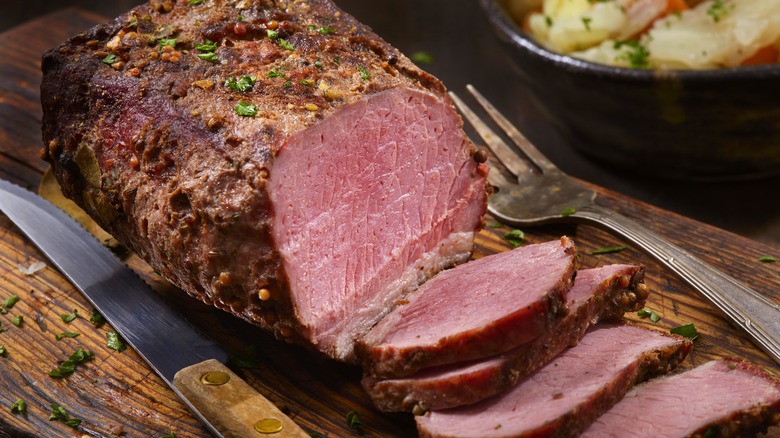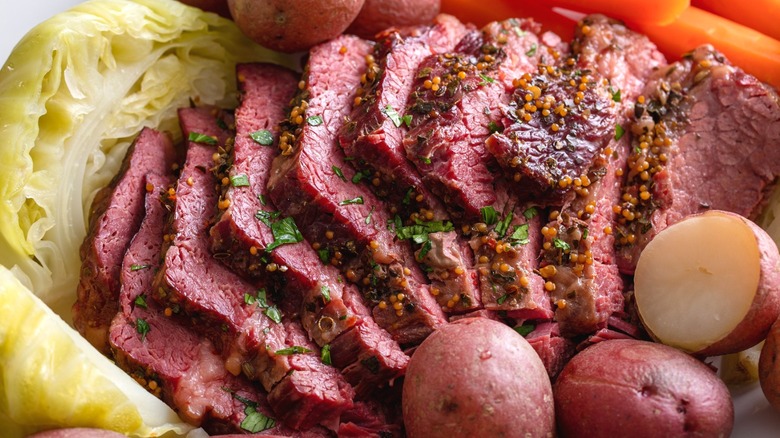Why Corned Beef Was Once Reserved For Royalty In Ireland
Corned beef and cabbage may be an Irish American tradition today, but it wasn't always the case for the mainland Irish. Historically, cows were symbols of wealth and provided far more utility as living animals that could pull carts around in the fields or produce dairy products. Beef was really only eaten when a cow could no longer work, or when it was cooked for the aristocracy. One poem from the 12th century mentions corned beef being prepared for the king as one of the earliest records of salting beef as opposed to using sea ash (burnt seaweed) to cure meat.
Cattle didn't become a widespread commodity until the 17th century when England exported the animals from Ireland for eating as well as working. But the Cattle Acts of 1660s declared that England couldn't keep using Irish land for farming and exporting cows. Once Ireland began to experience an excess of cows, citizens started eating and curing beef with salt to make corned beef. However, global demand for corned beef exports surged prices and made the dish a delicacy once again. Because of scarcity or English intervention, beef faded in and out of the Irish commoner's diet until modern times.
Corned beef's popularity among Irish Americans
During The Great Hunger, a period of colonial violence against Ireland by the English government, many Irish people had to flee their homes to other parts of the country where they relied heavily on potatoes for their diet. This made the potato famine of the 1800s particularly devastating, ultimately leading to the influx of Irish immigrants to the United States. While they faced hardships as immigrants in the New World, the Irish were able to make more money and gain access to beef brisket, a dish that was popular with European Jewish immigrants who had settled in New York City. Brisket is a staple in Jewish cuisine, and Kosher butchers prepared it in a way that the Irish could use as a base for corned beef. Jews and Irish Catholics who shared the same neighborhoods in the Northeastern U.S. found that these shared dishes helped form strong bonds between different cultures.
Making corned beef became a symbolic celebration of surviving famine. With the expansion of agricultural industrialization throughout the 1900s, corned beef became something people could enjoy any time, and it soon entered American New Year's and St. Patrick's Day traditions. The best quality is going to be homemade, but even canned corned beef offers plenty of culinary uses. Thankfully, it no longer takes being a king to partake in the dish.

